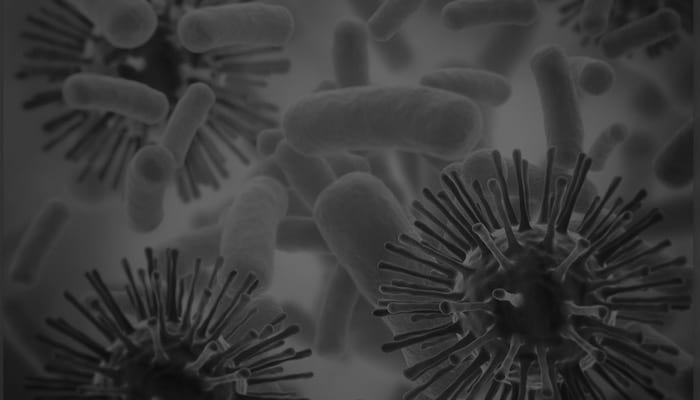The perfect human pathogen?
aka Microbial Mystery 007
With the arrival of winter comes Norovirus season. Norovirus is, perhaps, the perfect human pathogen. As such, we should probably know a bit about it.
Are you ready for the Norovirus microbial mystery challenge?
Questions
Q1. What type of virus is norovirus?
Answer and interpretation
Norovirus is a member of the Calciviridae family, it is a positive sense single stranded RNA virus and non-enveloped.
These traits allow the virus to rapidly mutate and remain viable in the environment. Norovirus is heat and cold resistant, and capable on surviving on hard surfaces for 12 hours and on carpeted surfaces for up to 12 days.
Q2. How infectious is norovirus and how is it spread?
Answer and interpretation
Extremely so!… It is estimated that 50% of global gastroenteritis cases are caused by this agent.
Infected individuals have been estimated to produce 10E5-10E11 infectious particles per gram of faeces. An infectious dose of Norovirus is estimated to be as low as 18 virions. These particles are extremely small (27-38 nm) allowing them to become aerosolised.
Aerosolised particles can contaminate surfaces around the ill individual, or directly infect others in close proximity. The low infectious dose allows for low level contamination of food and water (including food handling) to cause clinical disease. A recent outbreak in the USA was associated with food that had been stored in the bathroom of an infected individual. Though the food was sealed (commercial chips etc) and stored in a reusable shopping bag, fomite transmission resulted in a further 7 cases.
Q3. What are the clinical manifestations of norovirus infection?
Answer and interpretation
Gastro!
A host infected with Norovirus may become symptomatic within 12-72 hours. Infectious period begins with onset of the loose watery stools, nausea and vomiting. Most people are ill for 1-2 days, but the host may remain infectious for 3-14 days post resolution.
The high mutation rate of the virus limits long term immunity, immunocompetent people are just as susceptible as those naive to the infection.
Q4. How can we limit the spread of norovirus?
Answer and interpretation
We can’t beat it, but we can limit it with barrier and contact precautions and use of chlorine-based cleaning products.
Being a non-enveloped virus it is resistant to desiccation. This renders ethanol based sanitisers ineffective agents against Norovirus. Chlorine based cleaning products should be used to clean surfaces after a suspected Norovirus case. Barrier and contact precautions are highly recommended. Where possible, those infected should be given their own private bathrooms to prevent others becoming infected.
These measures don’t negate infection risk, but greatly reduce secondary cases from 14.05 to 2.13 per primary.
Aerosolisation has been a significant means of transmission in the hospital environment. Infection of medical staff can leave many wards short of available hands.
To finish with, here’s a case study that may put you off some foods. Oysters are particularly risky for Hepatitis A, Norovirus and Enteroviruses. Sewage contamination of bivalve mollusks isn’t a new occurrence. The last line of this communication (from ProMED) may be disputed by many microbiologists.
Re: Norovirus outbreak in oysters in Louisiana
In this outbreak norovirus was suspected on the basis of incubation period, symptoms (vomiting, diarrhea, no fever…) and further confirmed by identification of norovirus in stools of cases. No attempt was made to identify norovirus in oysters. Apparently the process of identifying norovirus in oysters, and food in general is complicated. It was done in the past at a FDA lab on the Gulf coast but it is not done routinely. In such a limited outbreak, the assumption is that the source is an oyster collector or another fisher that relieved himself in the water or dumped the “relief” bucket overboard.
An interesting observation in this outbreak is that those who ate broiled oysters also got sick although the odds ratios were much lower than for those who ate raw oysters. Broiled oyster meat was probably not brought to a sufficient temp to inactivate all viruses.
Enjoying raw oysters is well worth the small risk of diarrhea.
Communicated by:
Raoult Ratard MD MPH
State Epidemiologist
Louisiana Office of Public Health
1450 Poydras, Ste 2159,
New Orleans, LA 70112
USA
References
- Hall AJ. Noroviruses: the perfect human pathogens? J Infect Dis. 2012 Jun;205(11):1622-4. Epub 2012 May 8. PubMed PMID: 22573872. [fulltext]
- Heijne JC, Teunis P, Morroy G, Wijkmans C, Oostveen S, Duizer E, Kretzschmar M, Wallinga J. Enhanced hygiene measures and norovirus transmission during an outbreak. Emerg Infect Dis. 2009 Jan;15(1):24-30. PubMed PMID: 19116045; PubMed Central PMCID: PMC2660689.
- Repp KK, Keene WE. A point-source norovirus outbreak caused by exposure to fomites. J Infect Dis. 2012 Jun;205(11):1639-41. Epub 2012 May 8. PubMed PMID: 22573873. [fulltext]

CLINICAL CASES
Microbial Mystery
Molecular microbiologist, Post-Doc in infectious diseases research . Research focus on ESBL and carbapenemases. Current UWA Medical student | @CdrHBiscuitIII | LinkedIn |
